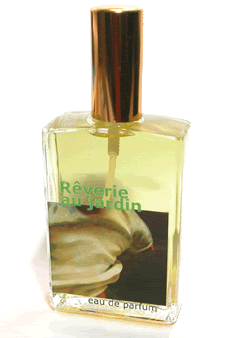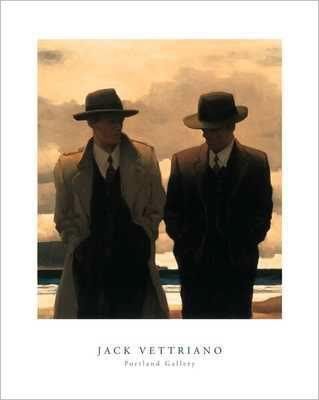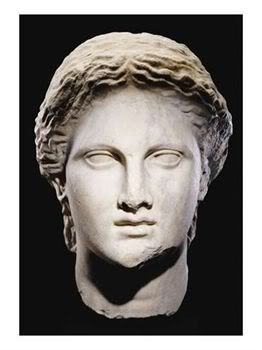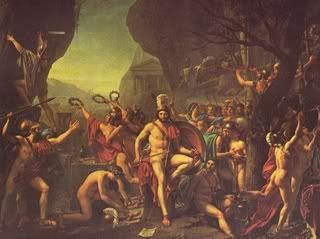
Incense is inextricably linked to liturgy and religious ceremonies since pagan times and as I am not particularly religious myself, but more interested in aspects of history and tradition, I chose to simply grab the chance to talk about a very popular perfume note that never fails to put scent lovers in a mood. Therefore the reader should not see this series of articles as any attempt at catechizing or preaching of the wonders of any faith or sect, as my objective is to provide a fun and hopefully interesting method of attributing specific incense perfumes to certain moods as reflected by tales from religious texts and categorizing them into broad categories that encompass certain commonalities. I am sure this could be done for any religion and faith existing in regard to perfumes. Let’s just say it seemed a novel idea to me. This first article aims to also provide a little introduction to the relation of incense and Christian practice.
Incense of course has a noble history since antiquity as a means of pesticide, air cleanser and for medical and poisonous purposes as well. It was also used in sacrificial liturgies and this practice was picked up by Christians who blamed pagans for their habits, nevertheless soon adopted several of their common habits in their own liturgical usage. The Hebrew tradition is of course rich in the aromatic on its own and Song of Songs is only a smidgeon of that aspect.
Tracing back the beginning of such incense use as a pathway to the divine in Christian church we stumble upon Ephrem and the Transitus Mariae, after its 300 years of exile from Christian practices. Later on, stylite ascetics ignited such admiration for their superhuman feats and willpower that their position as literally and spiritually above and beyond was linked to the smoke rings rising from incense burning in censers, like the bodily matter immaterializes into the spiritual. Incense piety had begun in earnest for the Christian faith. Saints were said to exude the paradisial scent of myrrh, while devil and his disciples were inextricably linked to sulfur (as supposedly witnessed by Martin of Tours). Foul smells also recall decay and disease and thus invoke an image of human fall and corruption which is metaphorically linked to a moral low.
Ambrose of Milan calls Christ the flower of Mary, denoting a pleasant sensory experience in the presence of the holy and the continuation of fragrance emitting even after death, just like flowers do after being cut. It is no accident that even today in churches and monasteries there is myrrh and frankincense anointed to the mortar and sold to the devout while ascetic places now open to visit for the public smell potently of that most holy of aromas.
Myself I adore ecclesiastical incense which I buy in “tears” not from shops or internet e-tailers but directly from church and flea markets, made by monks usually at the Athos monastic community in Greece. I will elaborate on it on an upcoming post as it is interesting in itself, but suffice to say that the variety I prefer called “moscholeevano” ("leevan" etymologically derives from Levant, the east, or Lebanon) which is a deep, dark, resiny smell with a piercingly sweet top that makes the heart ache a bit and is on the whole likened on various fora to the exhaust fumes of a diesel engine vehicle. I think not, but we will have plenty of time elucidating that in a forthcoming installment.
It is worth noting in passing before we proceed any further that incense as a term is not a single note or ingredient but that it can in turn have various notes in itself. The classical ingredients for incense are frankincense or olibanum while myrrh and labdanum are also used, along with many others. Many recipes exist and each perfumer –professional or amateur- is composing one’s own mixture.
We thus begin our exploration of incense in relation to the celebrations of the Holy week with Palm Sunday, the first day of the holy week and the aftermath of Lazarus’s resurrection, perhaps the most famous miracle supposedly performed by Jesus.
The last Sunday of Lent is commonly referred to as Palm Sunday. On that day religious texts tell us that Christ entered Jerusalem on a donkey, to be greeted by the crowds gathered for Passover carrying palm branches. By doing so he enacted the prophecy of Zechariah 9:9 and also showed the humility with which he envisioned the Kingdom he proclaimed. However this is also the beginning of the Holy week that culminated in Crucifixion and Resurrection and is thus also called Passion Week.
Although Jesus was greeted with “Hosanna to the son of David”, recalling the famous King David of the Old Testament, it is perhaps an irony that that same crowd was against him just days afterwards. However this is only human nature and does not reflect on any religious antagonism in my opinion, taking in mind too that in the name of Christ lots of those holy places were pillaged and people were slain in later centuries.
To revert to semiotics, the traditional Lent colour is purple in Protestant churches, while in Catholic tradition on Palm Sunday it changes to red with all its connotations to life and blood, hence its use to connote the martyrs of faith in Christian iconography.
First mention of Palm Sunday procession is to be found in the travel journal of Etheria, a nun from northwest Spain who made a pilgrimage to Jerusalem toward the end of the fourth century. In her writing she refers to Palm Sunday as the beginning of the Paschal Week (pascha=easter, deriving from the Hebrew peschah).
Therefore as this plethora of symbols and inferences is not lost upon me, upon reflecting on specific perfumes that explore one aspect of incense I came up with the following suggestions.
Ouarzazate by Comme des Garcons Incense series: The first images that came to my mind upon resniffing this were the locales of exotic Morocco of which it is inspired and named after (there is indeed an ancient city by that name in the Atlas mountain area). Scenery for a lot of movies recently, some of the sandal-and-sword type, Ourazazte the fragrance has a dry and hot character immediately. The initial harsh top note of clary sage gives a very pungent, herbal aspect of disinfectant, which I am sure would be useful in those hot places, festering with bacteria, and it is this which had initially deterred me from further appreciating the composition in this rendition of incense in the infamous and revered Incense series by the Japanese brand. The hotness and coolness of peppercorns is tickling-but not singeing- the nostrils supported by a lemony phase that is actually the best part for me personally, while the incense is only hinted at and never as rich and full as the type used in liturgy. However it is not the far eastern variety but reminiscent of western tradition. The ethereal and resinous quality of wenge and labdanum is anchored by dry woods, soft clean musk (the synthetic cashmere woods) and a mineral veil of hard rock that is very a propos the exoticism of the proposed association.
It smells white and is illuminated by a hopeful and clearing tone of people walking great distances in rugged territory in anticipation of something worthy.
The whole does not last long, just as the triumphant procession through the streets of the holy land did not either.
This is a thinking person’s incense for outdoor activities in a hot climate and suitable for both sexes, not a sensual, cuddly, warm type at all, despite the mentioned inclusion of vanilla which is absent to my nose.
Timbuktu by L’artisan parfumeur: Another atypical incense and woods fragrance, chosen because of its outdoorsy air and exotic character that smells of the Middle East and Africa. Not terribly popular, because of the weird ambience of it, however it is one of the most interesting compositions I have ever smelled and it retains a place in my heart for its limpid and soft medley of notes. Contrary to internet tails that it actually contains real animal matter (surely, this is just sensationalism to you and me and I doubt L’artisan intentionally hinted at such notions) it has a woody, black soil character that overcomes the feline urinous smell it is so often accused of possessing. Frankincense takes a slightly bitter turn in this one and it is an airy and light incense note like that in Passage d’enfer; its marriage with spicy cardamom, a middle-eastern favourite aroma used for scenting Arabian coffee is very successful.
It has a tart but not really sharp acidic note throughout that is balanced by the earthy dirty plant scent that reminds one of unidentifiable leaves and roots. Abstract dryness is the overall tone of the composition and a verge towards the unisex or even to the masculine end of the spectrum is not uncalled for. This is not to imply that it doesn’t smell good on woman’s skin, because it does, but it is not what most people in the West associate with a feminine smell, although it is said to have been inspired by a traditional recipe of African women as an attraction elixir. Bertrand Duchaufour,the nose behind this oddball, visited his brother in Mali where he learned that the women there concocted a fragrant alloy of flower petals spices, fruits and woods which they used to scent themselves. The fruits in Timbuktu are nothing like the department store variety of saccharine persuasion we have come to expect and do not make a pronounced appearance. In fact it is not very unlike the niche green mango note that is present in Jardin sur le Nil (although there it manages to also evoke the peel of fresh grapefruit to me). The inclusion of patchouli of the Voleur de Roses variety, vetiver and myrrh provide a backdrop for good lasting power allied to the powderiness of benzoin which makes a short vanishing act at the end.
I do not find it similar to anything else on the market, although a slight relation to Kyoto from CDG Incense series might be detected if hard pressed.
I find it is best suited to in-between weather: neither too cold, nor too cold, so autumn and spring are its shining seasons. It comes in eau de toilette.
Costes by Hotel Costes: I hesitated before including this one in today’s procession, because it is rather warmer and somehow richer in its ambience, with its spicy cinnamon and white pepper character, but the notion that it is inspired by a hotel in Paris (thus having a hospitalier connotation) and made for them and the red colour designated to this day -which is reflected in the packaging of this perfume- convinced me to mention it just as well. The nose behind it is Olivia Giacobetti, a young and quirky perfumer who has worked on many inriguing scents such as En passant, Passage d'enfer, and Dzing! Initially conceived as a candle and then as a fragrance by people who have also ventured into musical CD compilations aiming at providing lifestyle options, it manages to smell different on different people.
It still has the green and herbal character that is tied to the vision I have of this day in my mind, with a touch of evergreens, crushed coriander and laurel leaves that remind me of a good stew or lentil soup being made.
Luckily, although it is said to be included among the mix, rose does not make a pronounced appearance on me, meaning it is not the old-fashioned powdery rose which might take a turn for the sour on certain skins (or brains...). There is also a soap element like that of alkaline suds of slightly sweet sandalwood old-fashioned men’s soap allied with pure lavender that is surfacing on my skin and thus it takes a clean turn that is rather welcome in warmer weather. That aspect is not antithetical to the notion of incense fragrances as lots of them do explore the pureness and spirituality of cleanness. It is not only the deep, pungent efforts that might reek of pretence that capture the mysterious. The incense in Costes is smoky and not too rich, slightly recalling a much lighter (and thus perhaps more wearable for lots of people) of Essence of John Galliano by Diptyque which also started as an ambience smell rather than a personal fragrance (more on which later on).
I think Costes can be enjoyed in any season by both sexes, as long as the wearer has a little individuality and a modern air about them and is not up against a heatwave. Its lasting power is average for an eau de toilette concentration.
Next installment in the series will tackle a different aspect of incense.
Greek orthodox icon pic comes from saintbarbara.org
.jpg)











